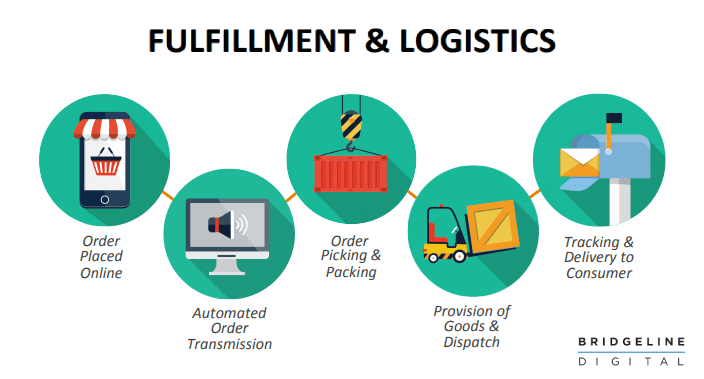How to Overcome the Top 5 Pain Points in eCommerce Fulfillment
E-Commerce & Retail | Dec 28, 2019
As an owner of an eCommerce business, you know how fulfillment is crucial. After all, your customers trust your ability to deliver their goods promptly without any major complications.
But it might still be possible that your eCommerce fulfillment isn’t working. If you’re not aware of it now, then expect to experience its negative consequences eventually.
Here are the most common pain points in e-commerce fulfillment and how to overcome them:

Photo by Pixabay From Pexels
Problem 1: Locating Inventory
When your customer is ordering a product, then you should easily locate the item in your inventory.
If you have a disorganized warehouse and communicates poorly with your suppliers, then you might have a hard time locating your inventory. This can result in shipping delays.
There’s nothing more frustrating on the part of your customers than shipping delays, especially if they paid for premium delivery.
Solution 1: Real-Time Inventory Management System
To avoid this scenario from ever happening to you, you need to have a real-time inventory management system. You may also hire people who can install and operate it for your eCommerce business.
The quicker you’re able to locate your inventory, the faster you can deliver the goods to your customers. This increases the likelihood of turning a one time customer into a customer for life.
Related: Survey Report—Surviving the Retail Apocalypse
Problem 2: Getting Outside of the Country Orders
It’s amazing how the internet can help expand your target market. However, shipping internationally does come with a lot of regulations and paperwork on your part.
You should know right off the bat how much the international shipping would cost, as well as the tax and custom charges in a particular country.
Solution 2: Build an Information Database
One way to equip yourself before you start shipping internationally is to come up with a plan beforehand.
It might be time-consuming on your part, but you need to create an information database that will let you comfortably set prices, ensuring that you don’t run into problems down the road.
What you need to do is to know the various shipping rates for various weights and package sizes in a specific country. Check out various carriers to ensure that you’re getting the best deal.
Your customers’ are responsible for these fees, so you don’t have to worry too much about paying for international shipping. Still, it’s vital to know this information in case any of your customers made an inquiry.
You should also add a disclaimer on your site, letting your prospects know that additional import fees could be charged for international shipping.
Problem 3: Handling the Wrong/Damaged Item to a Customer
When a customer waits for days (or even weeks) to receive their order and received a damaged product, the experience can be infuriating for them.
There are even some businesses that intentionally send out slightly damaged products, hoping that their customers won’t notice. But they do.
Let’s say someone received a damaged or wrong item. Not only will it cost more money on your end to replace the product, but people will also have qualms from ordering from you again.
Solution 3: Develop an Inventory and Logistics System
We couldn’t stress this enough. The right inventory management will help you to avoid sending the wrong or damaged item(s) from happening.
Your inventory should be housed carefully, and you also need to double-check the items before sending them. Pay for insurance, and use high-quality packaging. For damaged items, you should have a long-term strategy as well.
No matter how particular you are in managing your inventory, some things will be out of your control like damaged or lost products. It’s simply how your business works. Replacing wrong or damaged items can be expensive, so you should have the shipping insurance for every item. Thus, consider paying for insurance and use high-quality packaging.
Meanwhile, charging your customers for returned items will frustrate them even more. What you can offer them instead is a free return envelope or a label that’s pre-printed to make it easy for them to make returns.
Ensure that the return process is as easy as possible. Turning a mistake into a good experience in your customer’s part can turn them into loyal brand evangelists in the long run.

Fulfillment Services in E-commerce Logistics
Problem 4: Team Miscommunication
Miscommunication in your team can cause a disorganized inventory and shipping delays. If everyone isn’t on the same page, then it’s extra challenging for your people to get their work done.
Solution 4: Host Regular Team Meetings
You might probably have all the customer information that you need. But you won’t be helping your team in the long run if you don’t effectively communicate with them, supplying them with the information that they need.
What you can do is to conduct meetings regularly, make your messaging system more centralized, and orient them properly on how you operate.
Problem 5: Administrative Errors in Product Shipping
Transporting an item from your warehouse right to your customer’s doorstep needs a lot of coordination in an extensive network. Any sort of error that you encounter along the way might leave a customer unsatisfied.
The more negative ratings and complaints you get, the less likely people will trust your brand.
A lot of administrative errors can happen along the way. A product can be lost easily because of a wrong delivery address, or an unexpected issue might arise in your shipping company. Errors in packing might cause you to deliver the wrong item. Misfiled orders might lead to delays in shipping.
The list could go on and on.
Solution 5: Make Sure Packages Are Checked Before Shipping
Luckily, you can easily eliminate administrative errors as long as everyone in your team is ready to put in the effort.
Ensure that your employees know the consequences of these errors. Place procedures if you can, to ensure that these errors don’t happen the second time around.
Final Thoughts
Have you noticed these issues in your business? Once you identify these pain points, make sure that you look for a way to delegate, automate, and scale the solution to the right people to make sure that you eliminate these issues.
Warning: Undefined array key "sidebar_ads" in /home/dmc/public_html/wp-content/themes/DMC/functions/helpers.php on line 824





